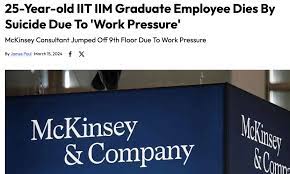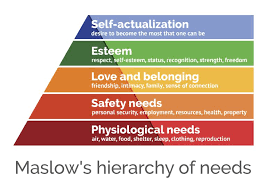Yes, Vir Das was absolutely right. There are indeed two Indias.
I came across an article that describes how a star can get reduced into a planetary body. For this to happen, the star will have to come under the influence of a bigger star and a host of other conditions will have to be satisfied. It is written by an award-winning astrophysicist and will not be to everybody’s taste and comprehension. So why am I writing about a mundane article on astronomy here?
In Indian astrology, the Shani God is associated with Saturn and is supposedly the son of the Sun God (Surya Putra). The primary effect of Shani on people’s lives is to control their earthly desires, lead them to a more spiritual life and reduce their worldly needs. In ancient Rome, Saturnalia was a week-long festival celebrated to honour their agricultural God Saturn. So why was Saturn given so much significance and, more importantly, attributed to the Sun? This is where our understanding of ancient texts and beliefs improves as science and technology leaps forward and influences all fields of study. By connecting the above article with the ancient beliefs and significance of Saturn, it can be easily deduced that Saturn was a star and it got reduced to a planet when it came into the influence of the Sun.
So, where did these Gods come in the explanation of a celestial event? Any celestial event that can exert its influence on our planet can have great implications on the planet and on our lives. But describing celestial events to people and passing them on through generations would be impossible. What we need to understand here is there is written history and then there is pre-history. Pre-history is that time when there were no writing methods and events from the past were passed on as stories in the form of poems because it is easier for us to remember songs and poems, recite them and pass them on through the generations. For example, indigenous tribes in Africa and Australia still pass on stories from their distant past through songs. Valmiki was apparently the first one to record the story of Ramayana and Vyasa was the first one to record the story of Mahabharata in written forms. Great wars are mentioned in both the epics but weapons are described in the form of bows and arrows. Mahabharata even mentions mushroom cloud, which we understood only when we exploded the first atom bomb. All of this only means the first people who recorded in the written form only understood weapons as bows and arrows. The same is the case with Sun and Saturn. We will easily remember Gods and festivals, so every celestial event is associated with a God and a festival was attached to it. So for an easy explanation, all the astronomical details were stripped off and it is simply mentioned that Shani is the son of the Sun God.
This leads to even larger questions. What exactly is the churning of the ocean of milk as mentioned in ancient Indian texts? Is it a metaphor for the creation of the Milky Way or is it describing a certain process in which the Milky Way was created? This, in turn, leads to the biggest question of all. First, Brahma is born from the navel of Vishnu, who then proceeds to create the Universe. Again is this a metaphor or the process of creation of the Universe being described? No evidence of the people and events mentioned in the Ramayana and Mahabharata have been found yet, but the technological references in them are too good for the stories to be ignored as myths. In the Mahabharata, the charioteer of the blind king Dhritarashtra was given the ability to “see” the war from the confines of the palace itself and narrate it to the king. Experiments with remote viewing, which is using the ability of our mind to see far off things and events, went on in the U.S. for decades.
Though there are similarities in the descriptions of the Trinity of Gods and creation stories of the world and humans across all ancient civilizations, none of them matches the vivid descriptions mentioned in ancient Indian texts. The detailed technical designs of the vimanas, descriptions of highly advanced and destructive weapons and their after effects, natural treatment methods, what the ancient texts contain are probably keys to unlocking the knowledge of the Universe itself. Then what is holding us back from understanding them?
One, our knowledge about science, technology and our own abilities is still in its infancy. Why is it mentioned that those who wanted to do penance used to go to deep forests and mountain tops? For complete focus and concentration, yes, but why did they go to very specific places? Why did Shankaracharya walk all the way from his village in Kerala to the Himalayas more than 2000 years back? Why did he do penance at obscure places like at the Kodachadri mountain to which accessibility is difficult even now and where a Goddess apparently appeared before him? How did these Gods appear before those who sat in penance to invoke them? Scientists now know that there are wormholes in the Universe that open at certain points and can act as portals between extremely vast distances in the Universe, but they do not know how to keep them open long enough to travel through them. What if penance was done at places where wormholes could open through which Gods could travel and Sankaracharya was searching for such places to do penance?
The second and most important reason, blind belief. Indian society is conditioned not to ask questions, especially the question of why. The Sree Padmanabhaswamy Temple in Trivandrum has tons of gold inside it sitting idle. Why is it being kept and safeguarded? Ram travelled from north India all the way to south India and to Lanka. Did Ram write Ramayana? No. Did anyone travel with him and chronicle his journey to write in such great detail? No. If the weapons mentioned in the Mahabharata were indeed used at Kurukshetra, the place where the war was supposedly fought, most of the north Indian plains would probably still be uninhabitable because of nuclear radiation. Questions to ask are too many.
What Hindus in India are in possession of are ancient texts, the origins of which are indeterminate. The Vedas and Puranas are treasure troves of knowledge that we largely do not understand. The epics Ramayana and Mahabharata contain information about extremely advanced technology that we have just started make sense of with our technological advancements. After Christianity was integrated into Rome, the hundreds of Christian sects existing at that time got together to choose the gospels for the Bible with the sole intention of creating the holy book of Christianity. Similar is the case with Islam and Quran. Were any ancient Indian texts written with the objective of making them holy books of a religion? No. Indian kings such as Ashoka went abroad and spread India’s culture, not a religion, which is why a currency note of Indonesia, the largest Muslim populated country, has the image of Lord Ganesha. If India had a religion from ancient times, it would have had unified the people just like Christianity and Islam did. Foreign invaders would have had found it almost impossible to find a footing on Indian land. Instead, what they found was small and fragmented kingdoms squabbling with one another, which made their conquests of India so much easier. Moreover, Indians have willingly converted to other religions, which would not have happened if there was already an existing religion binding them together.
So yes, there are two Indias. One is unable to use the vast repository of knowledge at its disposal. The other is deep-rooted in the blind belief of a culture that is now being manipulated and used as a religion of 33 million Gods and the exploitation of society in the form of caste system based vote banks. Everything else we see in Indian society today is the manifestation of these two aspects.



















